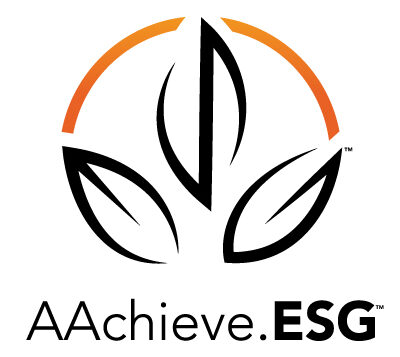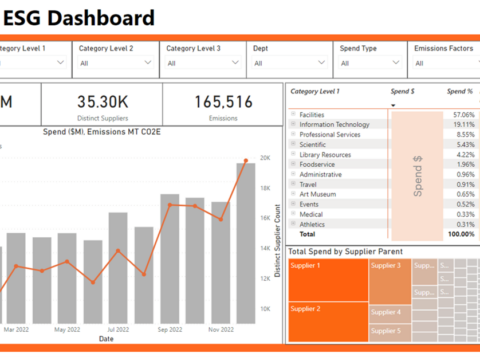How Small Vendors Can Drive Big Savings: Unlocking Value in Procurement’s Blind Spots
This is an AArete Profitability Improvement insight
In procurement and vendor management, high-spend suppliers often steal the spotlight—and for good reason. Significant resources and strategic efforts like contract negotiations, risk assessments, and sourcing initiatives are typically the focus as high-spend, high-impact vendors. However, behind the scenes lies a significant yet overlooked opportunity: “tail spend” vendors. Though individually smaller in spend, collectively, these suppliers represent a considerable 20%–25% of total vendor spend across many organizations and industries.
Neglecting the strategic management of these smaller vendors can lead to hidden inefficiencies, fragmented purchasing patterns, and heightened compliance risks. By shining a light on the “tail” of vendor spend, you can effectively unlock value and streamline operations, enhancing overall procurement efficiency.
Why the Overlooked ‘Tail Spend’ Matters
Procurement typically prioritizes major suppliers due to their strategic impact, but unmanaged low-spend vendors quietly drive-up costs and complexity. Here’s why these suppliers deserve attention:
Aggregate Spend Adds Up: While each vendor may account for a small portion of total spend, cumulatively they represent a sizeable portion of your procurement budget. Ignoring them can result in lost opportunities to optimize spend.
Operational Complexity Spirals: Managing hundreds or even thousands of low-spend suppliers inflate invoice volumes, vendor onboarding demands, and compliance checks, leading to administrative headaches and hidden operational costs.
Hidden Savings Opportunities: Many of these vendor relationships lack negotiation and oversight. Consequently, opportunities for better pricing, consolidation, or termination remain unexplored.
Compliance and Risk Exposure: Without proper oversight, low-spend vendors may slip through the compliance net, creating potential gaps in regulatory adherence, security standards, or contractual terms.
Addressing these challenges transforms tail spend from a procurement afterthought into a strategic advantage.
Best Practices to Maximize Tail Spend Value
To elevate procurement performance, organizations need strategic, yet practical approaches specifically tailored to tail spend leading with automation and other scalable approaches:
1. Gain Visibility through Strategic Vendor Segmentation
Effective management begins with a clear view. Leveraging spend analytics allows procurement teams to segment vendors by spend category, volume, frequency, service overlap, and strategic value. Identifying patterns—such as multiple departments buying the same type of service from different suppliers—can reveal immediate opportunities for vendor consolidation.
For example, organizations often use multiple plumbing or remediation vendors across sites in the same geographic region or maintain separate landscaping contracts for similar facilities. Even with IT peripheral supplies, tail spend can creep up through fragmented ordering channels. Categorizing vendors using a taxonomy-based framework helps eliminate redundancy and bring spend under tighter control.
2. Implement Tail Spend Purchasing Programs
Targeted management strategies explicitly focused on the bottom 20% of vendors can yield rapid results. Proven methods include:
- Catalog-Based Procurement: Set up MRO, office supply, and breakroom vendors via punchout catalogs in your ERP or Source-to-Pay platform. If you lack an S2P solution, use vendor-hosted e-catalogs (e.g., staples.com) to simplify purchasing and ensure pricing consistency.
- Preferred Vendor Lists: Establish pre-approved, “first call” suppliers for frequent tail spend purchases, reducing procurement friction and increasing negotiating leverage.
- Strategic Spot Buying: Utilize preferred aggregator platforms or marketplaces for ad-hoc purchases, ensuring competitive pricing and consolidated, automated invoicing.
3. Embrace Automation to Scale Effectively
Manual vendor management processes are not scalable when dealing with thousands of vendors. Automation is critical for tasks such as:
- Vendor onboarding
- Risk assessment and compliance checks
- Contract management
- Invoice and payment processing.
Automating routine functions significantly reduce administrative burdens, freeing procurement teams to focus on higher-impact supplier relationships.
4. Standardize Purchasing Policies for Efficiency
Clear guidelines help drive compliance and reduce rogue spending. Establish purchasing policies that include competitive bid thresholds, approval routing protocols, and preferred vendor usage expectations. For payments, ensure a robust P-Card (Purchasing Card) program is in place—this not only simplifies payments for low-dollar purchases but can also return value through rebate incentives.
5. Leverage Data to Drive Smarter Procurement Decisions
Continuous, real-time visibility into spend data helps procurement teams proactively identify opportunities and anomalies. By monitoring vendor performance and spending patterns, organizations can quickly pinpoint redundancies, optimize purchasing decisions, and enforce compliance more effectively
6. Implement Right-Sized Controls Without Added Complexity
Not all suppliers warrant rigorous governance processes. Implement lightweight risk assessment models and simplified contract templates to lower-spend vendors. This balanced approach maintains essential oversight while preventing unnecessary operational friction.
Even if your organization already leverages a spend analytics tool, gaps in execution often persist—such as limited cross-department visibility, fragmented purchasing channels, or insufficient automation. Addressing these disconnects may require a more comprehensive approach. Solutions like AArete’s SpendSphere® can help by offering integrated, data-driven capabilities to better manage tail spend, streamline procurement operations, and ensure no spend is left unmanaged.
Essential Considerations for Tail Spend Management
Effective tail spend management isn’t purely a procurement initiative, it demands broader organizational alignment:
- Secure Stakeholder Buy-In: Gaining alignment from business owners is critical, especially for those who regularly engage with niche or specialty suppliers. Clear communication around cost savings, efficiency improvements, and compliance benefits foster buy-in and cooperation.
- Enable the Right Technology: Ensure your ERP, vendor management systems, Source-to-Pay stacks and analytics platforms can effectively track, segment, and manage low-spend suppliers. Technology is fundamental to operationalizing tail spend initiatives.
- Prioritize Change Management: Shifting organizational buying behaviors requires clear communication, ongoing training, and appropriate incentives for policy adherence. Encourage adherence to standardized processes through education, demonstrating tangible benefits and sharing success stories internally.
Converting Vendor Blind Spots into Competitive Strengths
While low-spend vendors may seem insignificant, their collective impact on your organization’s procurement efficiency, profitability, and risk exposure is immense. By proactively managing tail spend, your organization can reduce complexity, uncover savings, and build a stronger, more resilient procurement function.
In the era of data-informed decision-making, low-spend doesn’t mean low priority. It’s time to elevate your vendor spend management strategy, shining a strategic spotlight on the forgotten 20%.

























































































